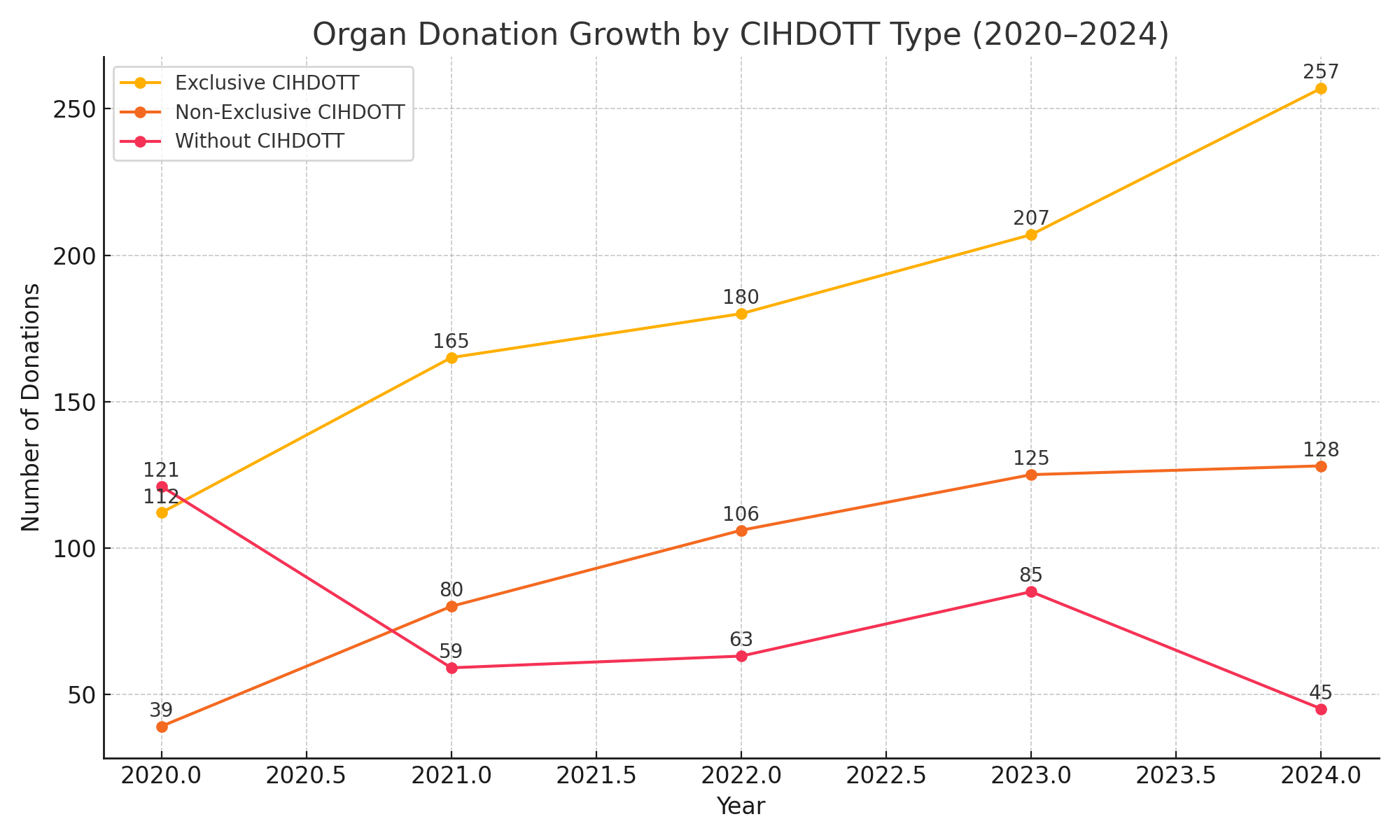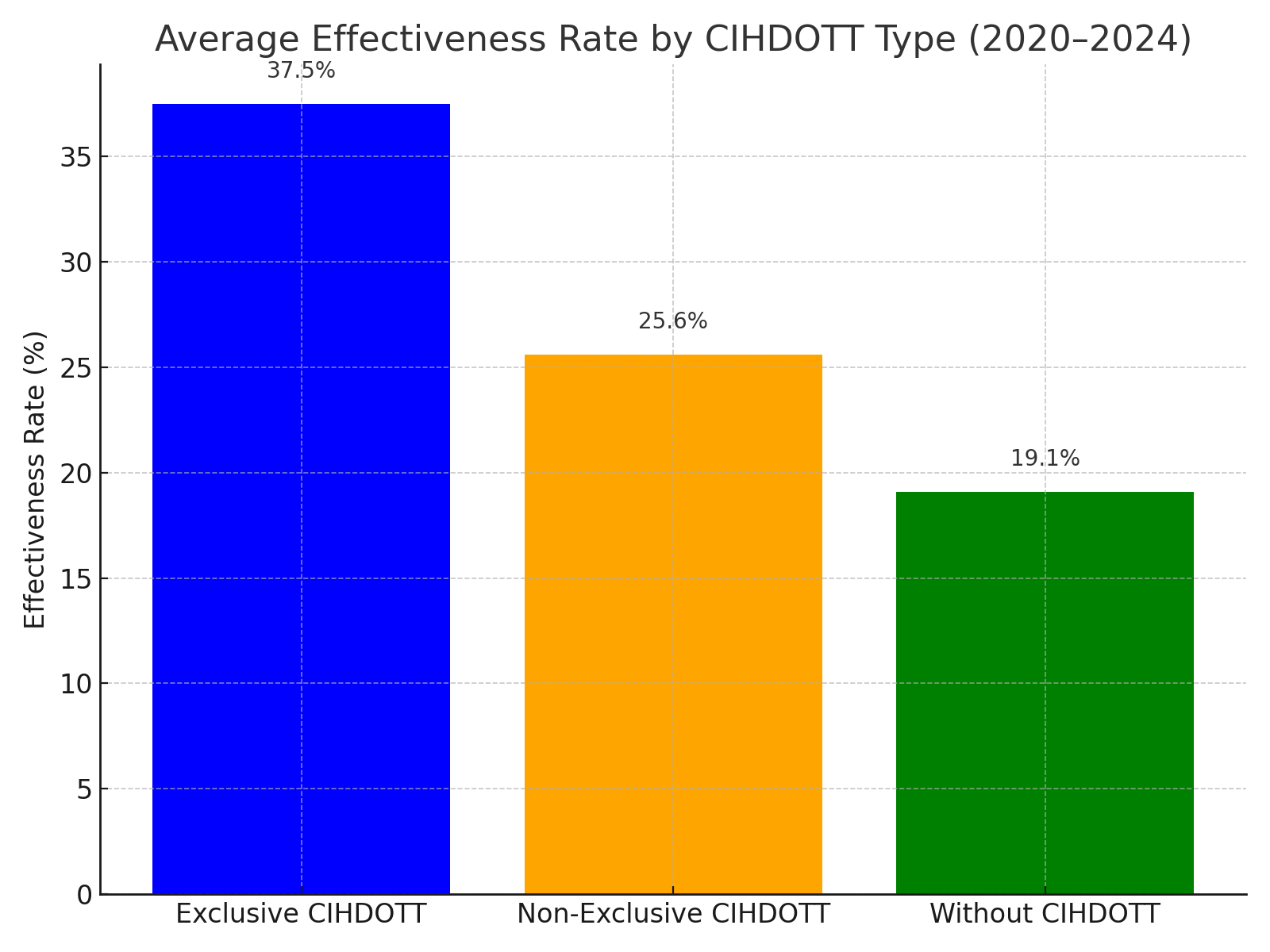Effectiveness of dedicated in-hospital organ donation teams (CIHDOTT) in Brazil: A five-year retrospective analysis (2020–2024)
Luiz Gustavo Torres Dias da Cruz2,3, Danielle Moreira Marques2, Bianca de Almeida do Vale1, Monica Silvina França da Silva de Melo4.
1Central Estadual de Transplantes, Rio de Janeiro , Brazil; 2Research Center for Evidence-Based Nursing – NUPEBe, Universidade do Estado do Rio de Janeiro, Rio de Janeiro , Brazil; 3PhD Program in Health Technology Assessment, Instituto Nacional de Cardiologia , Rio de Janeiro, Brazil; 4Cardiac Intensive Care Unit (CICU), Hospital Universitário Clementino Fraga Filho , Rio de Janeiro , Brazil
Research Center for Evidence-Based Nursing – NUPEBe.
Introduction: Organ donation remains a challenge in developing countries due to organizational, ethical, and systemic factors. In Brazil, In-Hospital Committees for Organ and Tissue Donation for Transplantation (CIHDOTT) are strategic structures to increase donation rates. This study aims to assess the impact of hospitals with exclusive CIHDOTT on effective organ donation compared to those without or with non-exclusive teams.
Method: A retrospective, quantitative study analyzed 3,671 notifications of brain death recorded between 2020 and 2024 in the State of Rio de Janeiro. Data were grouped by hospital type: with exclusive CIHDOTT, non-exclusive CIHDOTT, and without CIHDOTT. Statistical analysis included one-way ANOVA, Tukey post hoc test, linear regression for trend analysis, and logistic regression for association between group type and effective donation.
Results:

Hospitals with exclusive CIHDOTT showed an average effectiveness rate of 37.5%, significantly higher than non-exclusive (25.6%) and no-CIHDOTT hospitals (19.1%) (p<0.001). Linear regression showed a sustained annual increase in donations in the exclusive CIHDOTT group (+33.2/year, R²=0.97). Logistic regression demonstrated that notifications made by exclusive CIHDOTT were 1.69 times more likely to result in effective donation compared to hospitals without CIHDOTT (OR=1.69; CI 95%: 1.47–1.95; p<0.001).

Conclusion: The presence of exclusive CIHDOTT teams significantly improves donation outcomes and fosters consistent growth in organ availability. These findings support the expansion of dedicated donor coordination teams as a key organizational strategy for national donation systems, especially in middle-income countries.
Ethics and Disclosure: The data used in this study are anonymized and derived from secondary public sources, with no patient identification involved. No conflicts of interest to declare.
The authors express their gratitude to the State Transplant Center of Rio de Janeiro for access to essential data and technical support, and to the Pedro Ernesto University Hospital (HUPE/UERJ) for institutional encouragement and collaboration throughout this research. Special thanks to the DTI Foundation for awarding the Pepe Builtrón Scholarship to the first author, which provided critical support for academic development and international exchange in the field of organ donation and transplantation .
[1] Organ Donation
[2] Tissue and Organ Procurement
[3] Health Status Indicators
[4] Tissue and Organ Procurement / organization & administration